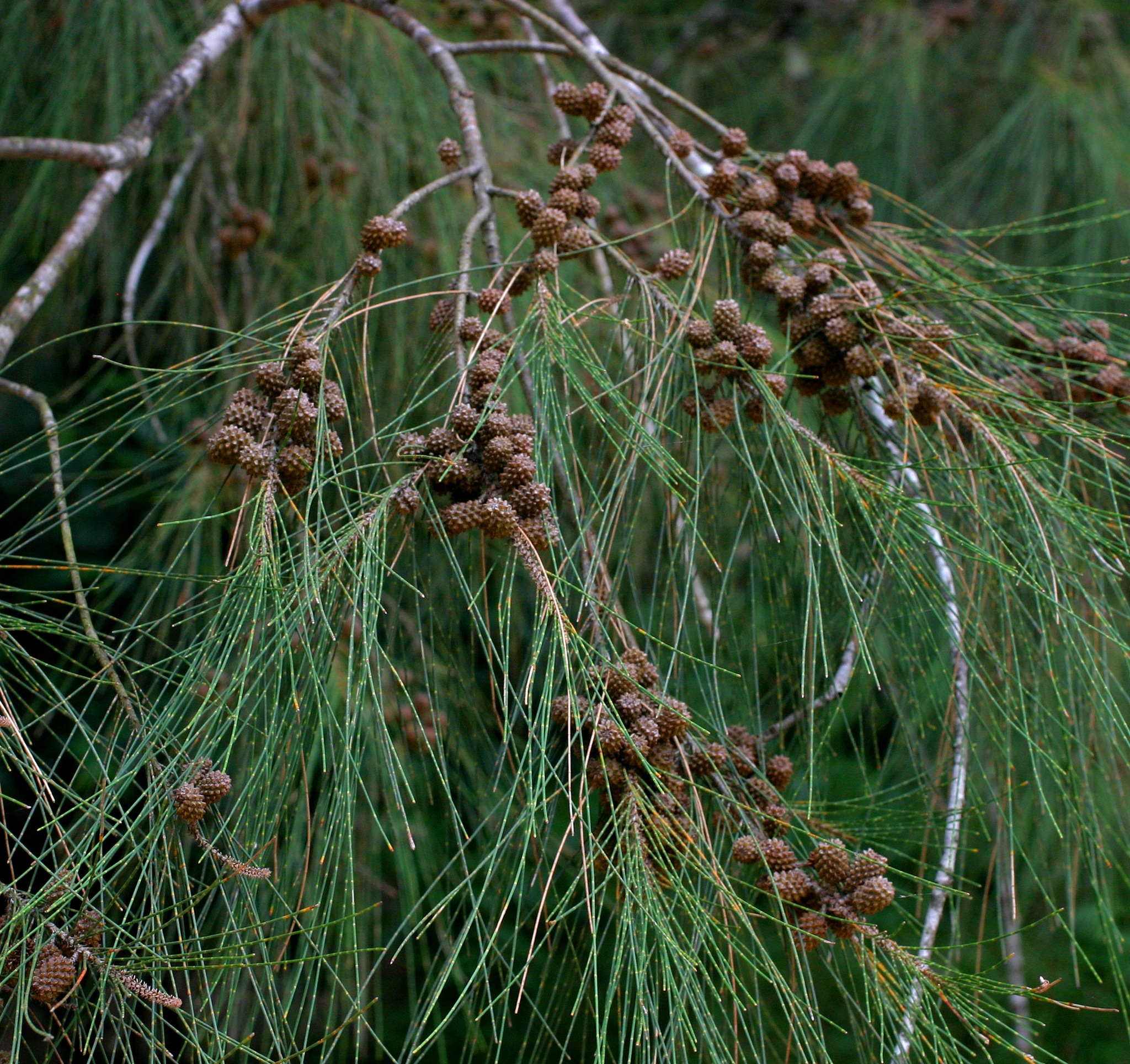Photo by Tony Rodd licensed under CC BY-NC-SA 2.0
No, what you are looking at here is not a type of conifer. Nor is it an oak. This odd plant belongs in its own family - Casuarinaceae. Despite their gymnosperm appearance, this is in fact a family of flowering plants. Though the name “she-oak” does hint at their larger position within the order Fagales, it was actually given to these trees in reference to the density of their wood in comparison to more commonly harvested oak species. Other common names for trees in this group include ironwood, bull-oak, beefwood.
As a whole this family sorts out as sister to Myricaceae in the order Fagales. It' is comprised of 4 genera (Allocasuarina, Casuarina, Ceuthostoma, and Gymnostoma) and roughly 91 species spread among Australia, Malaysia, and much of Polynesia. It is extremely difficult to make generalizations across so many species but there is one aspect of this family that makes them stand out - their appearance.
Gymnostoma sp. Photo by Tony Rodd licensed under CC BY-NC-SA 2.0
Gymnostoma nobile in Sarawak, Malaysia. Photo by Dr. Scott Zona licensed under CC BY-NC 2.0
Without close inspection, one could be forgiven for thinking the various Casuarinaceae were species of conifer. For starters, their leaves have been reduced to tiny whorls surrounding their photosynthetic stems. The stems themselves have taken up the role of photosynthetic organs, which is one of the reasons this family is known for its drought tolerance. Reducing the surface area available for gas exchange helps to reduce water loss in the process. The stems themselves are arranged with whorls around the branches, giving them a rather bunched appearance. The photosynthetic branches are sometimes referred to as being ‘equisetiform’ as they superficially resemble the stems of Equisetum. They do not shed their photosynthetic branches and are therefore evergreen.
As mentioned, these are flowering plants. Their flowers themselves are aggregated into spike-like inflorescences near the tips of branches. Clusters of male flowers resemble catkin-like strobili and are often brightly colored. Female flowers are clustered into a more ovoid shape, with long, filamentous pistils sticking out like fiery, red pompoms. After fertilization, bracts at the base of the female flowers swell and the whole inflorescence starts to look more like some sort of a conifer cone than anything floral. This may have to do with the fact that, like conifers, the various Casuarinaceae are wind pollinated. Therefore, their reproductive structures have had to deal with similar selective forces related to optimizing pollen dispersal and capture.
Casuarina equisetifolia with catkin-like male flowers and smaller, red female flowers. Photo by B.navez licensed under the GNU Free Documentation License.
Another interesting trait common to Casuarinaceae is the ability to fix nitrogen. The plants themselves don’t do the fixing, rather they form specialized nodules on their roots that house nitrogen-fixing bacteria. Unlike perennial legumes that regrow their nodules year after year, the members of Casuarinaceae hold onto their nodules, which can grow into impressive structures over time. This ability to house nitrogen-fixing bacteria is also shared with other members of the order Fagales, including members of Betulaceae and Myricaceae.
Thanks to the fact that they can tolerate drought, fix nitrogen, and have high timber value, species of Casuarinaceae have been introduced far outside of their native ranges. This has created yet another invasive species issue. Various Casuarinaceae have become serious pests in places like Central and South America, the Carribbean, and the Middle East. Control of such hardy plants can be extremely difficult once they reach a critical mass that maintains them on the landscape. Keep you eye out for these species. Not only are they interesting in their own right, knowing them can help you better understand their role in ecosystems both native and not.
Allocasuarina decaisneana (Desert Oaks), Central Australia. Photo by Cgoodwin licensed under the GNU Free Documentation License.





